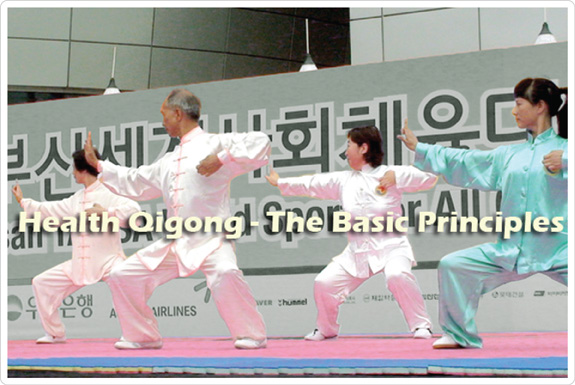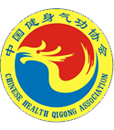Health Qigong -
What is Health Qigong?
The Basics

The word “qigong” is pronounced as CHEE-Kung. It is a combination of "qi", which is energy, and "gong", meaning exercise.
The origins of Health Qigong can be found as far back as the Song Dynasty (960-1279 AD). Through academic research at various sports universities in China (Beijing Sport University, Shanghai University of Sport, Wuhan Institution of Physical Education, and Tsinghua University under the auspices of CHQA), the traditional meditation exercise has evolved into five new practice forms, each with a unique correlation to Chinese medical principles. They are: Yi Jin Jing, Wu Qin Xi, Liu Zi Jue, Ba Duan Jin and Shi'er Duan Jin.
The essential theory behind health qigong is the unifying of body movements, rhythms of breathing, and Chinese medical principles to exercise and regulate one’s body, breath, and mind. It is aimed at strengthening and maintaining one's body, not only its muscles, but also the tendons, internal organs, and general flow of “qi” through the main meridians. For example, Liu Zi Jue uses principles of resonance in certain vibrations and frequencies emitted from one’s voice to massage the internal organs. Yi Jin Jing, in which the word “Jin” means tendon, is a form that focuses on movements which simultaneously stretches the tendons and opens up various acupuncture points along the 12 meridians of the body based on Chinese medical theories. Wu Qin Xi is generated from the forms of five animals: tiger, deer, bear, monkey and bird. It challenges the human body and mind to adjust to postures, motions, and tones found in the animal world. Ba Duan Jin is considered the most fundamental form in health qigong. It combines constant rotation of joints with contracting and expanding motions of the body to improve agility, strengthen the lower body and dredge the meridian system. Altogether, the various forms of health qigong pave a holistic way of achieving physical fitness.
Traditional Chinese Medical Principle
Qi, the Meridian system, and Health Qigong

photo source:kaleidoscope.cultural-china.com
In Chinese medical theory, the body has a circulation system consisting of twelve primary meridians. Instead of carrying blood as is the concept in Western medicine, meridians channel qi throughout the body, connecting all parts with the internal organs. A healthy body may thus be defined as one in which its qi flows smoothly along all of its meridians.
A familiar way of improving the flow of this qi is through accupuncture points, which are nodes along the meridians. In Health Qigong, the meridians are accessed through specific body movements and resonance of sound (as in Liu Zi Jue).

The Chinese Health Qigong Association is the official authority on information about Health Qigong. They regulate the certification of "Duan" exams as well as competition judging requirements.
CHQA also oversees the research and development of Health Qigong, advocating a new approach to combining exercise with Chinese medical principles.